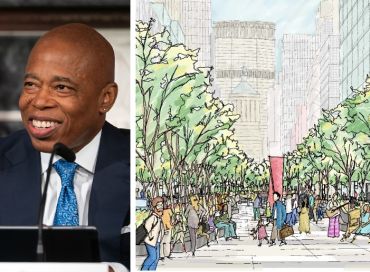Rent Guidelines Board Votes for Biggest Rent Increase in a Decade
By Mark Hallum May 6, 2022 2:49 pm
reprints
New York City’s Rent Guidelines Board (RGB) has given preliminary approval to the biggest rent increase for stabilized apartments in a decade, though the hikes were not as high as when the entity considered the matter in April.
On Thursday night, the RGB cast a preliminary vote in favor of increases from 2 to 4 percent for one-year leases and from 4 to 6 percent for two-year leases. The former would have the biggest impact on rent-stabilized apartments since a vote in 2013.
A final vote is scheduled for June 21. If approved, rent hikes would take effect after Oct. 1, according to the RGB.
While the largest increase in years, RGB’s vote is still below the between 2.7 and 9 percent increase for rent-stabilized apartments proposed in April.
With homelessness and evictions on the rise, any rent increase adopted by the board should be as small as possible and coincide with a larger strategy to resolve financial instability for tenants and landlords, said New York City Council Speaker Adrienne Adams.
“I urge the board to take a holistic view of our city’s economic health and reduce harm to struggling New Yorkers by staying in the lower range in its final decision,” Adams said in a statement. “The city needs a comprehensive housing plan that includes deeper investments in affordable housing development and preservation to achieve the housing stability that makes our communities stronger and safer.”
The Real Estate Board of New York (REBNY) submitted testimony that cast doubt on the formula the RBG used to come up with the percentage of allowable increases, stating that tenants, owners and the economy could be negatively affected by an ill-informed decision. REBNY claims the formula is based on net operating income (NOI) for buildings, which does not take into account debt and is based on 2-year-old data that leaves out inflation.
REBNY endorsed percentage increases more in line with those proposed in April.
“Lenders look for a building to meet two principal metrics — debt yield, which is NOI divided by the loan amount, to exceed 7.5 percent. This is tethered to interest rates and will be adversely impacted in the coming years,” REBNY’s testimony read. “It is our hope that the board will consider this information and issue a final vote for guidelines that fall within the recommended commensurate rates of 4.5 to 9 percent.”
Sheila Garcia, a tenant member of the RGB, advocated for “zero percent” adjustment to rent-stabilized hotels, single-room occupancy and other low-income units during the meeting. Her proposal did not generate further discussion by a significant number of other members, and her motion was not seconded.
“I think this board has acknowledged that rent-stabilized hotels are very profitable. There are also very few tenants who would consider themselves a rent-stabilized tenant in a hotel. I think that recognition by this board acknowledges that, one, we’re losing rent stabilization at a really high rate,” Garcia said. “The fact that there is no discussion is not what we want to happen to rent stabilization as a whole.“
Mark Hallum can be reached at mhallum@commercialobserver.com.


